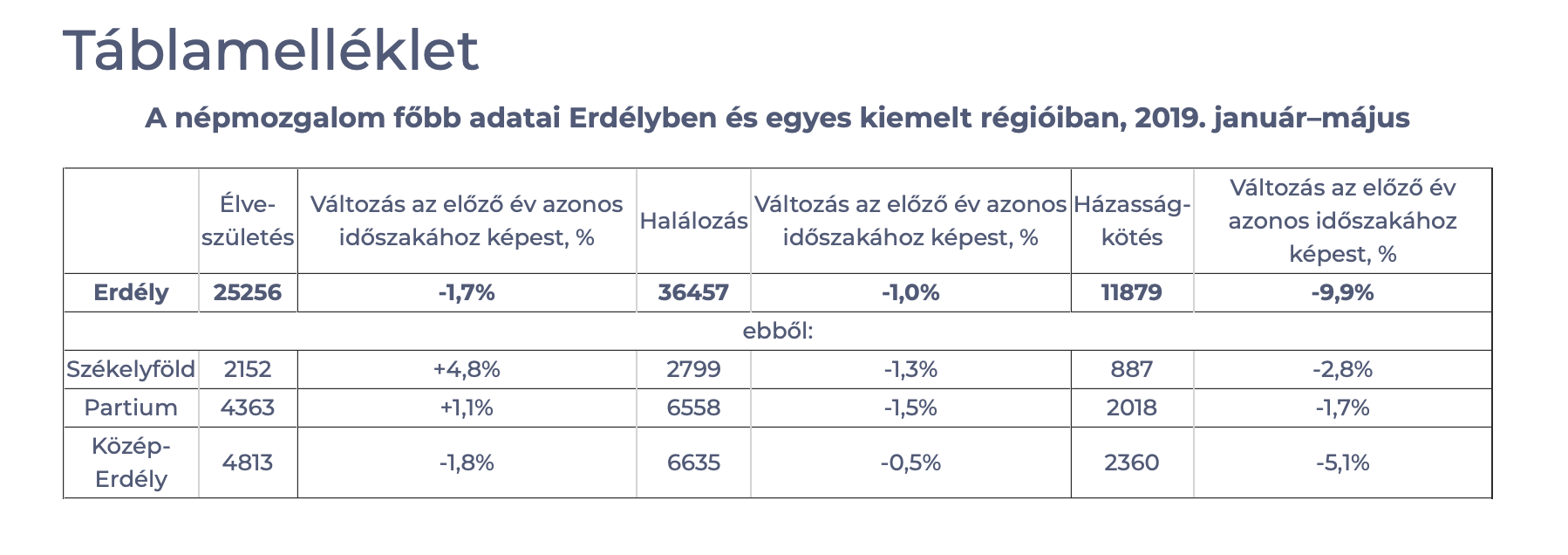In the first five months of 2019 the demographic decline was counterbalanced by the growth in birth rate in Transylvania, driven by a 4.8% increase – compared to the same period a year ago – in live-born children in the two counties populated by Szeklers. Death rate was 1.7% lower during the same period, which slowed down the demographic decline by 17.4% (11,201 deaths were recorded in the Transylvanian region), according to the latest data released by ErdélyStat.
In Transylvania, ErdélyStat has knowledge of 25,256 births between January and May, which is 439 (1.7%) lower than the birth rate a year ago. Preliminary data issued by the institution of statistics suggests that birth rate has dropped between February and May compared to the same period in 2018.

Still, the birth rate managed to bring some sort of a balance to the demographic decline: there were 36,457 deaths recorded in the same period, 359 (1.0%) higher than in January–May 2018. When subtracting the number of births from the number of deaths, we find the rate of demographic decline: during the first five months of the year, the region’s population fell by 11,201. While the decline isn’t as high, the population is dwindling, and we didn’t include the number of people working abroad.
In Szeklerland there was a noticeable increase in birth rates during the first five months of the year: 2,152 babies were born in Hargita/Harghita and Kovászna/Covasna counties, which is 98 (4.8%) higher than the same period a year ago. This resulted in a 17.4% slowdown in demographic decline compared to 2018.
In Bihar/Bihor, Szatmár/Satu Mare, and Szilágy/Salaj counties, 4,363 babies were born, compared to 6,558 recorded deaths, resulting in a 6.5% slowdown of the demographic decline in the region. Birth rate in Kolozs/Cluj and Maros/Mures counties, however, show a negative balance compared to January–May 2018. There were 4,813 newborns in 2019 vs. 4903 in 2018, a number that we subtract from the 6,635 deaths recorded during the same period, resulting in a 3.2% increase in demographic decline in the region compared to last year.
Title image: newborn baby. Source: Pixabay.com